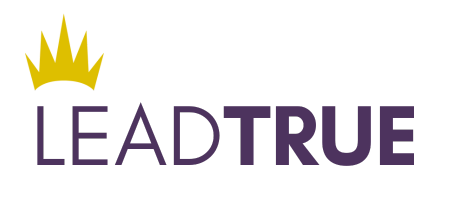3 Ways to Cure your Allergic Reaction to Power
Many leaders instinctively embrace a collaborative and inclusive style of leadership. They often resist and struggle with the one-dimensional command-and control-leadership style of the past.
They are so resistant to that directive leadership style, that they exude an overt aversion when you ask them questions like:
Are you powerful?
Do you want to be powerful?
Are you willing to be powerful?
They might stammer out a reply saying that power isn’t important to them. They might confidently state that they are leading in a new way which empowers others without needed to be egotistical or power hungry themselves.
We see this as an allergy to power: an immediate aversion to something in the external environment that damages someone’s health and immune system.
The good news is that this allergic reaction is curable. The first step is a proper diagnosis, because when we suffer from this allergy our careers suffer too. For example, we might avoid taking on new opportunities, hide from the spotlight or shy away from marketing our strengths clearly and with conviction. These types of self-defeating actions often delay your progress or stop it completely.
If you have this allergic reaction to power, it is not without reason. Look around at the current leadership and political stage. Most of the people in public power positions appear egotistical, narcissistic, lacking integrity and driven by a personal agenda instead of the common good. We might have experience with a supervisor who has gotten to the top by exhibiting these same forceful traits.
But it is important to realize that this is one facet of power; and, it is not the only way to embrace and use power. In fact, we believe that it’s not the most effective or sustainable source of power at all, and it is definitely not true power.
If you have a big vision, are committed to an outcome, and are tired of not treating your chronic allergy, we have a remedy for you. Follow these 3 steps to cure your allergy and reclaim your power.
1. Diagnose your allergy.
Leadership specialists Sloan Group International have identified a Power Continuum that includes five different categories of power: Power Over, Power From Outside, Power From Inside, Power From Meaning and Power With (illustrated below).
We believe that many of us are allergic to power because our experience has been with people who have a “Power Over” style. This style, while effective in certain circumstances, is only one dimension of a complex power dynamic. By embracing all of these styles of power, we can not only understand why we might be allergic to one or more particular style, but we can also identify a wide range of examples of what power can look like. And, we just might find a style that is more relate able and more appealing. This helps us understand we are not allergic to all power, just some approaches that are not congruent with our own styles and goals.When you review the chart above and recognize the type of power that is most appealing, you might be able to see how having an allergy to power is limiting. If you refuse to develop your power, your vision is likely at risk.Take a moment and ask yourself: How is your resistance to being powerful limiting the success of your vision? How does it affect others around you? How does it affect the next generation of leaders who are looking for role models? Are you allowing yourself to play small when you are called to play a much bigger game?
2. Identify positive power role models.
Although the negative, power-hungry role models are the ones that make top headlines, we each have positive role models that embody the type of power we desire. Make a list of these people along with their traits. Do they listen? Do they serve? Are they bold? Are they innovative? How are they inclusive of other opinions? How do they take personal responsibility for their actions and results? Do they acknowledge other contributions? Keep noticing the people around you that exhibit positive power traits and intentionally expand your list. You are in good company.
3. Create your Power Profile.
By combining your awareness of additional power dimensions with your list of positive role models you can create your personal Power Profile. Include:
How do I describe my style of power?
What do I want to be known for as a leader?
What leadership traits do I find most attractive and powerful?
When I am at my most powerful, what does that look like, and how does that feel physically?
What do I do under pressure, and how do I regain my balance?
What do I want others to think, feel, and say, as a result of my leadership?\
What’s the impact I want to have?
At Lead True, we believe women of influence are women of power. Power is the relationship between your vision and how quickly it materializes in the world. We want to cure any existing allergy you have to power so you can step into your leadership and cause groundbreaking results. Now, that is powerful!
About the Author
Elizabeth Ruske brings all aspects of her background and expertise to her work. This includes marketing, sales, business development, client services, strategic partnering, coaching, consulting and leadership development. She is known as a creative strategic thinker who embodies a win-win approach in every situation.














There are multiple reasons why diversity and inclusion should be a priority for any team. How exactly does this diversity expand thought processes and idea generation? Lead True Global Leader, Beth Ruske explains.